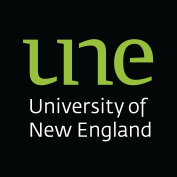Research Benchmarking
We’ve had some interesting and productive conversations around HASS in recent weeks about the proposed UNE Research Productivity Framework. We must consider how such a framework might impact us and our disciplines—especially recognising that HASS disciplines involve a wide range of research methods and acceptable modes of output. We do need this breadth to be recognised by the framework. I would go further and suggest that the framework should account for the ‘broad church’ of current research outcomes and also allow for the possibility of ongoing expansion. After all, there are kinds of research outputs normalised in current use that did not even exist earlier in my career. Policy should not stifle innovation.
Speaking of TEQSA (Tertiary Education Quality and Standards Agency), let us acknowledge that we work in one of Australia’s most tightly regulated sectors. The freedom we experience or hope for in academic work is very prescribed. As Glyn Davis (former Melbourne VC and current Secretary of the Department of the Prime Minister and Cabinet) observed several years ago:
“[…] the shape of Australian universities is the consequence of federal higher education policy. […] Key variables for university strategy are controlled by Canberra—how much a university can charge domestic students, how many domestic undergraduates it can enrol, whether the borders will be open to international students. The Commonwealth directs most research funding […] the Australian public university is, above all, shaped by choices made in Canberra.” (My italics and emphasis)
Our regulator’s Guidance note on research requirements for universities is well worth reading, as it outlines what we need to do to demonstrate to TEQSA that we are a going concern as a School of HASS within an Australian university. In summary, it comes down to our responsibility to prove that we produce:
- Appropriate quantities of research outcomes
- That these outcomes are of a demonstrably high quality, and
- That these map appropriately onto the Fields of Education (FOE codes) in which we claim to be qualified to offer courses.
More precisely TEQSA’s benchmarks for research standards are:
-
- research that is world standard measured using best practice indicators, and/or
- research of national standing in fields specific to Australia, in the case of research that is not easily captured by existing standard indicators
It is up to us as a university to formulate a way to demonstrate to TEQSA that we meet these benchmarks, although TEQSA does acknowledge that they give great weight to decisions made by the Australian Research Council (ARC) in this regard. In the ongoing absence of an ERA (national assessment of Excellence in Research for Australia), you can see why I feel a powerful need for us to be submitting more ARC grant applications than we do currently—in some respects, success in this area is the most powerful benchmarking evidence we can muster. Arguably, the national or world-class benchmarking is even more valuable to us than the funding.
Whatever our Research Framework ends up looking like, we need to keep this end point in sight: its purpose is to help us demonstrate to the regulator that we are, in fact, a university.



Recent Comments